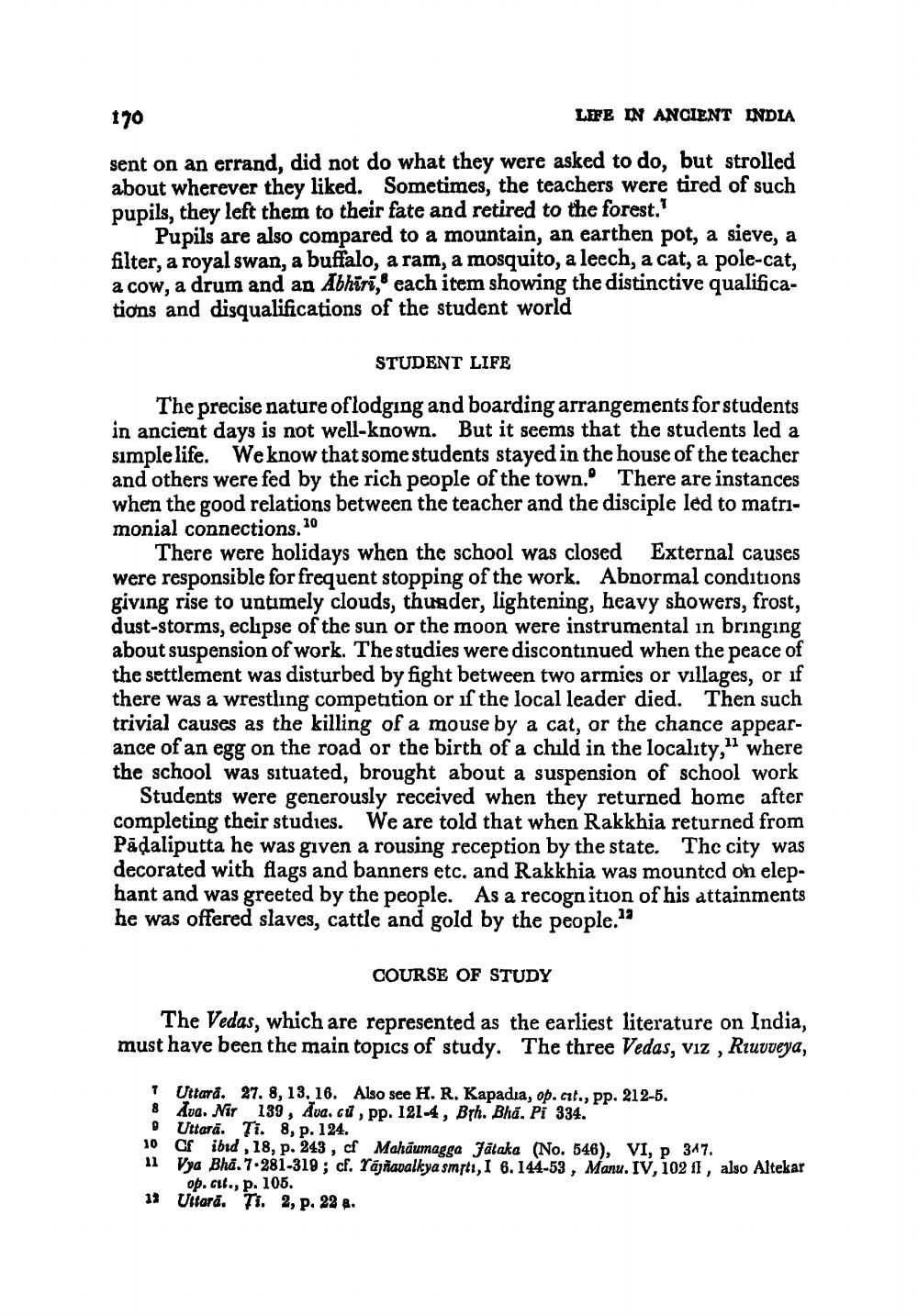________________
170
LIFE IN ANCIENT INDIA
sent on an errand, did not do what they were asked to do, but strolled about wherever they liked. Sometimes, the teachers were tired of such pupils, they left them to their fate and retired to the forest."
Pupils are also compared to a mountain, an earthen pot, a sieve, a filter, a royal swan, a buffalo, a ram, a mosquito, a leech, a cat, a pole-cat, a cow, a drum and an Abhiri, each item showing the distinctive qualifications and disqualifications of the student world
STUDENT LIFE
The precise nature of lodging and boarding arrangements for students in ancient days is not well-known. But it seems that the students led a simple life. We know that some students stayed in the house of the teacher and others were fed by the rich people of the town." There are instances when the good relations between the teacher and the disciple led to matrimonial connections.10
There were holidays when the school was closed External causes were responsible for frequent stopping of the work. Abnormal conditions giving rise to untimely clouds, thunder, lightening, heavy showers, frost, dust-storms, eclipse of the sun or the moon were instrumental in bringing about suspension of work. The studies were discontinued when the peace of the settlement was disturbed by fight between two armies or villages, or if there was a wrestling competition or if the local leader died. Then such trivial causes as the killing of a mouse by a cat, or the chance appearance of an egg on the road or the birth of a child in the locality," where the school was situated, brought about a suspension of school work
Students were generously received when they returned home after completing their studies. We are told that when Rakkhia returned from Pāḍaliputta he was given a rousing reception by the state. The city was decorated with flags and banners etc. and Rakkhia was mounted on elephant and was greeted by the people. As a recognition of his attainments he was offered slaves, cattle and gold by the people.11
COURSE OF STUDY
The Vedas, which are represented as the earliest literature on India, must have been the main topics of study. The three Vedas, viz, Riuvveya,
7 Uttara. 27. 8, 13, 16. Also see H. R. Kapadia, op. cit., pp. 212-5.
8 Ava. Nir 139, Ava. cu, pp. 121-4, Brh. Bhd. Pi 334.
9
Uttara. Ti. 8, p. 124.
10 Cf ibid, 18, p. 243, cf Mahaumagga Jataka (No. 546), VI, p 347.
11 Vya Bha. 7-281-319; cf. Yajnavalkya smrti, I 6. 144-53, Manu. IV, 102 fl, also Altekar
op. cit., p. 105.
12
Uttara. Ti. 2, p. 22 a.




